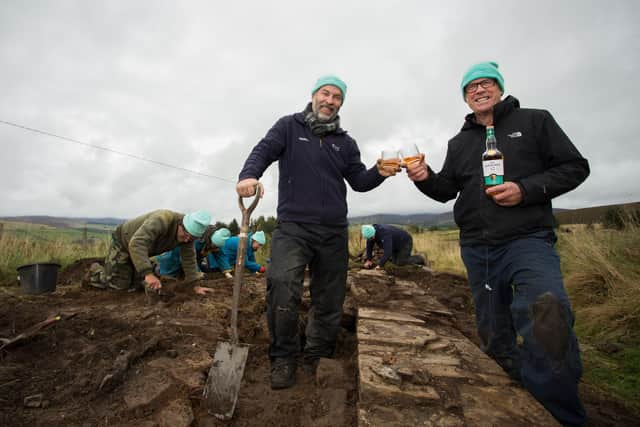Glenlivet: Archaeologists track Scottish whisky story from the black market to global export
The original Glenlivet site, which was operated by farmer George Smith from 1824 after he made his underground whisky making operation legal, is being excavated by archaeologists from National Trust for Scotland (NTS), who are working in conjunction with the distillery.
The site is around one kilometre from today’s home of Glenlivet, which Smith opened in 1859 to expand production and take advantage of a greater run of water off the hill.
Advertisement
Hide AdAdvertisement
Hide AdThe Pioneering Spirit project is now focusing on the original Glenlivet distillery after archaeologists spent months examining sites of illegal stills across the Highlands.
Derek Alexander, head of archaeological services at NTS, said: “The distillery we are working on here is a nice bridge between the small-scale illicit distilling and large scale industrial production.”
Today’s Glenlivet site is modelled on Smith’s original distillery, which was set up on his farm.
Such was Smith’s unpopularity in the local community after he was granted a legal distilling licence under the 1823 Excise Act, which sanctioned distilling for a £10 licence fee and set payment per gallon of proof spirit, that he acquired two pistols to defend his property.


Mr Alexander said the aim of the dig was to find archaeology for each stage of the distilling process, with the operation set up around a courtyard.
Earlier, a piece of exciseman’s padlock was found at the site with pieces of barrel now recovered.
Mr Alexander said: “We have also found the outline of the fireplaces where the stills were sitting.”
One may have been used for the wash still and the other for the spirit still, it is believed, with hopes that remains of the grain drying still will also be found. Pieces of copper sulphite, a waste product of the distilling process, have been discovered.
Advertisement
Hide AdAdvertisement
Hide AdThe excavation will run for two weeks and will be assisted by NTS volunteers and members of the surrounding community, including schoolchildren.
Mr Alexander said: “It’s much easier to dig this site than those much harder to reach places, where we are carrying our equipment up a hill track for maybe an hour and then into a gully. These places are quite inaccessible by their nature and not that safe.
"We were using the same techniques as the excisemen would when they were out looking for illicit stills. You basically follow the burn line.”
Robert Athol, newly appointed archivist for Chivas Brothers, which owns Glenlivet, said Smith risked “life and liberty” to produce whisky at his farm.
“His courage and conviction not only defined the path for The Glenlivet, but was also influential on the development of Scotch whisky in general.”
NTS estimates there are at least 30 illicit stills across its 129 sites, including at Torridon, Kintail, Grey Mare’s Tail and the Mar Lodge Estate in western Aberdeenshire.
Comments
Want to join the conversation? Please or to comment on this article.
